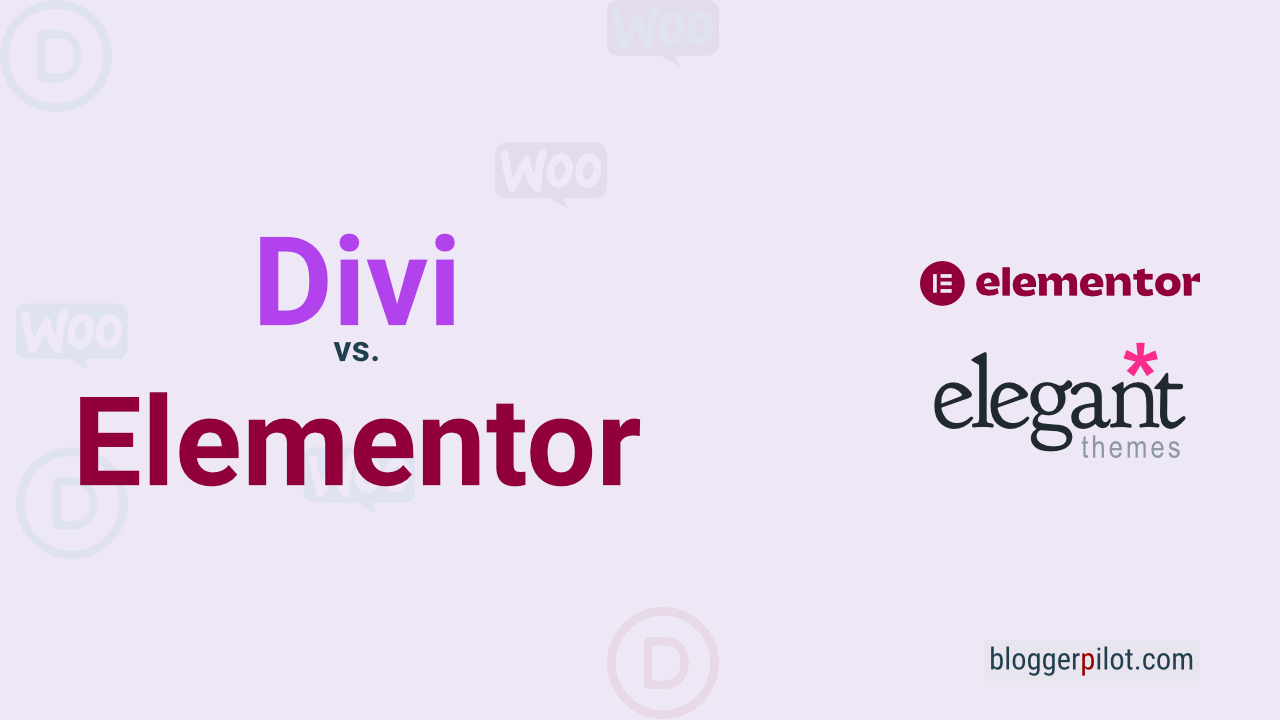Divi vs Elementor: Which is the better Page-Builder for WordPress?
When it comes to the best WordPress Page-Builder, it’s often all about Divi vs Elementor. Why this is the case becomes clear when you take a look at both tools in comparison. Not only do both Page-Builders have remarkable features and are particularly easy to use, they both simply offer you more than the current competition.
Jump directly to Elementor vs Divi comparison
Anyway, other drag-and-drop Page-Builders for WordPress rarely come close to Divi and Elementor, and that’s why it’s often said “Divi vs Elementor: Which is the better Page-Builder for WordPress?”. This is the question I’m asking myself in today’s article as well, and I’d like to give you a little advice if you’re still not sure yourself whether Divi or Elementor is the better choice for you.
Besides, there don’t seem to be any sensible alternatives to these two top dogs. Therefore, I will compare the two leading systems for you and tell you the typical advantages and disadvantages. In the end, there should be a clear winner that fully deserves the recommendation. Please also keep in mind that all my articles are based on personal experience and reflect my subjective opinion. So ask yourself about each point, how you see the matter yourself, in order to be able to draw the greatest possible benefit from my test.
In order to provide you with real added value, I will look at all the peculiarities of both Page-Builders for WordPress in detail. I compare the modules of Divi and Elementor with each other, look at the prices of the Page-Builders and check the WordPress performance as well as any extras or even difficulties in connection with the systems. Also a use in combination with other plugins (e.g. WooCommerce) plays a supporting role here of course. Have Divi and Elementor thought of this and possibly even provide a special and customized Page-Builder for such extensions?
Let’s just find out together, in my detailed test. If you want to learn more quickly now, just read on or jump straight down to get to my personal conclusion.
As a quick alternative, don’t forget to check out the Gutenberg Block Editor!
Divi vs Elementor
Divi and Elementor are grown up WordPress Page-Builders for users and web designers. Divi is cheaper overall because you can use all Elegant Themes products on as many websites as you want for $89.00. Elementor has a free version and costs $59.00 for one website. Elementor is easier and faster to use.
| Winner | 🏆 | |
| Features | ★★★★★ | ★★★★★ |
| Usability | ★★★★★ | ★★★★★ |
| Price/Performance | ★★★★★ | ★★★★★ |
| Price / year | $ 89,00 | $ 59,00 |
| Free version | no | yes |
| Websites | unlimited | 1 |
| Ready templates | 180 + | 300 + |
| Modules / Elements | 48 + | 90 + |
| Compatibility | Works best with the Divi theme. But can be used with the plugin for any other theme as well. | Elementor works very well with any theme. Especially GeneratePress makes a perfect combination with the Page-Builder. |
| My experience | Divi is very good for end users who want theme and Page-Builder from one vendor. | Elementor is more professional all around. It’s also faster to work with because it’s easier to select elements and columns. |
| See the Product | See the Product |
Right off the bat, it’s interesting to note that Elementor and Divi have two completely different approaches in a direct comparison. Elementor comes as a comparatively classic WordPress plugin, while Divi shipped as a WordPress theme from the start. Thus, one is clearly an extension for the existing blog, while the other adds its own WordPress theme with an integrated Page-Builder. But what exactly is this fact about, and how does all this show up in everyday life?
There’s not too much of a fuss about it once I take a look at the differences. As you might have guessed, they both amount to something very similar. Because whether you integrate a Page-Builder into the CMS as an additional WordPress plugin or in the form of a theme, it really doesn’t matter too much in the end.
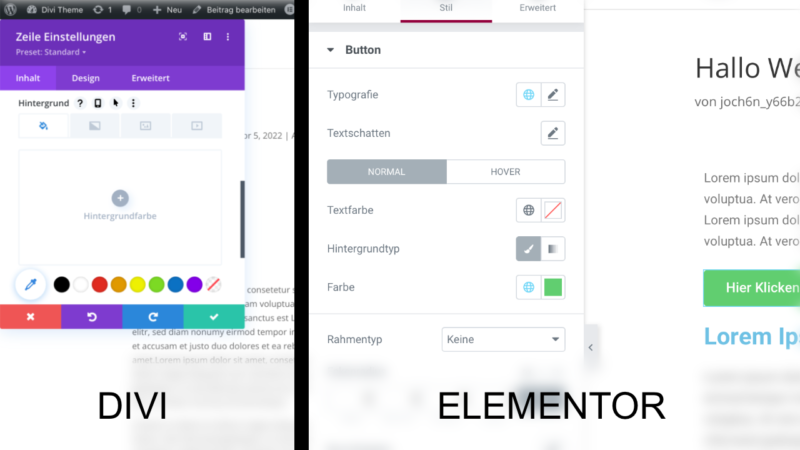
Due to the variety of possibilities, a lot of WordPress themes are now so extensive that they almost function like plugins. Plugins, for their part, also easily take over the tasks that used to be reserved for themes only. So the whole thing has been merging for a long time, and Divi and Elementor show here very well that this is perfectly okay.
Info: Divi Builder is also available as a plugin. But mainly the Page-Builder is used with Divi itself.
The difference between the two Page-Builders is more due to the fact that Divi ends up being quite massively focused on its own WordPress theme. Everything about Divi is therefore customized to the theme in question. It’s more of a custom framework, but one that always stays within its own cosmos. Elementor, on the other hand, wants to be as flexible as possible and basically works with almost all WordPress themes without rigid boundaries. It is not so much a framework as an add-on to an existing base.
Both can be an advantage, as well as it could be considered a disadvantage. But a little more about that later. For now, let’s take a look at exactly how you need to use Divi and Elementor to get everything to work as you want it to.
Comparison of the two Page-Builders
There is hardly anything as individual as one’s own workflow while working. Every person completes their tasks in a completely different way and builds up their own way of doing things over time. In the meantime, I have also developed my own personal workflow within WordPress.
For example, I always make screenshots on the side, so that I can later include enough suitable images in my articles. This is important for me, so that the screenshots come from a real situation and do not have to be created afterwards. This is just a small example of how I write and illustrate my blog articles.
Such a workflow also exists when creating articles and thus when using Divi as well as Elementor. However, as I just mentioned, this is always personal in nature and thus difficult to compare. So I’ll try to be a bit more neutral in the next section, even though I’ll always include my own opinion, as you’re used to from me.
In general, the following should therefore mainly be about the basic operation of the two WordPress Page-Builders. How are Divi and Elementor structured and what is the creation of articles based on? These questions are now to be clarified.
Divi Theme in use

With Divi, everything happens directly on the website itself. Here you activate Divi’s Page-Builder and then decide on one of three possible bases.
- Either you start with an empty page content,
- select a predefined layout
- or copy an existing design.
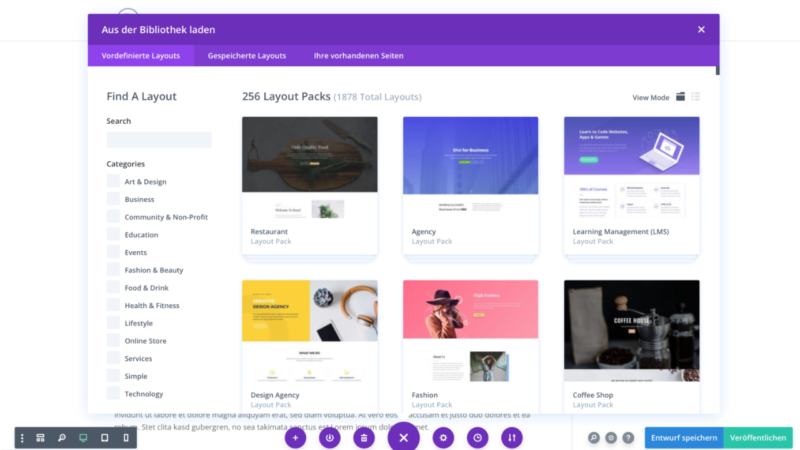
The latter is actually very handy if you have already created your first standard pages and just want to quickly take over the layout for new pages. This can save you a lot of time in everyday life.
The general possibilities are also quite diverse and designs are created by clicking the different elements together. This all works well, but is a bit more fiddly directly on the website than with Elementor, in my opinion. In addition, it seems a bit overloaded, especially at the beginning, and may even overwhelm some people. On the other hand, there is an almost infinite number of possibilities and everything that is implemented is immediately visible on the website.
The big advantage of Divi Builder is that you don’t even have to switch to the actual editor. You don’t even have to enter the backend to edit your WordPress website. Everything happens with a click in the frontend and is available there instantly. That this works so easily is quite impressive and shows how well thought out Divi has been developed.
Modules from Divi

Divi has a lot of ready-made layouts to offer. Layouts basically include the entire design of a website. From the classic blog, to a contact page, design for photographers, or lawyers or a Landing-Page.
Divi’s website advertises over 40 possible elements, which equals modules. In addition, there are also the modules for WooCommerce. So here, too, there is a corresponding module available for every purpose, even if the whole thing doesn’t turn out as extensive as Elementor. But a little more about that later.
Elementor plugin in use
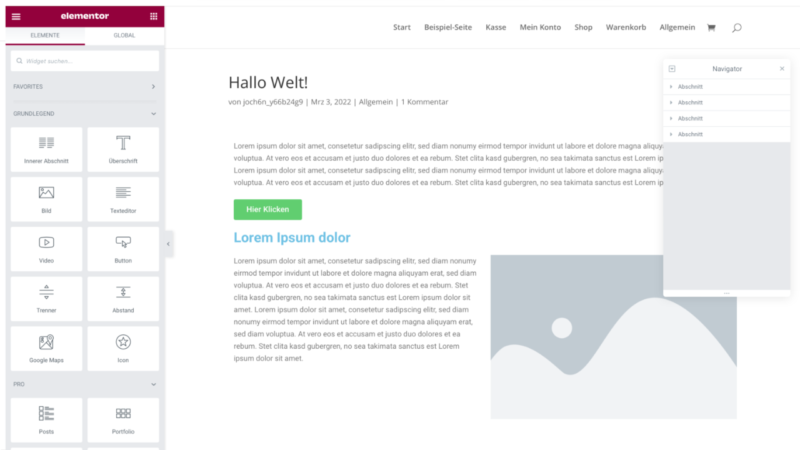
With Elementor, I first have to switch to the backend to activate the Page-Builder within WordPress. Elementor then opens as a standalone editor and works with the respective theme. For the test, I was even able to use the Divi theme as a base, which caused no problems whatsoever.
So Elementor is really not a standalone WordPress theme, but rather a pure WordPress plugin that can work with almost all available themes. This functionality already makes the Page-Builder very different from Divi and thus also changes the general way of working enormously.
In terms of operation, Elementor is simpler and less nested than Divi. Widgets define individual page areas, which I can then equip with elements such as texts, images, buttons, separators and all sorts of other things. Here Elementor has many different categories in stock and an almost infinite selection of customization options. There really is the right module for every purpose. This leads me to the next point.
Modules of Elementor
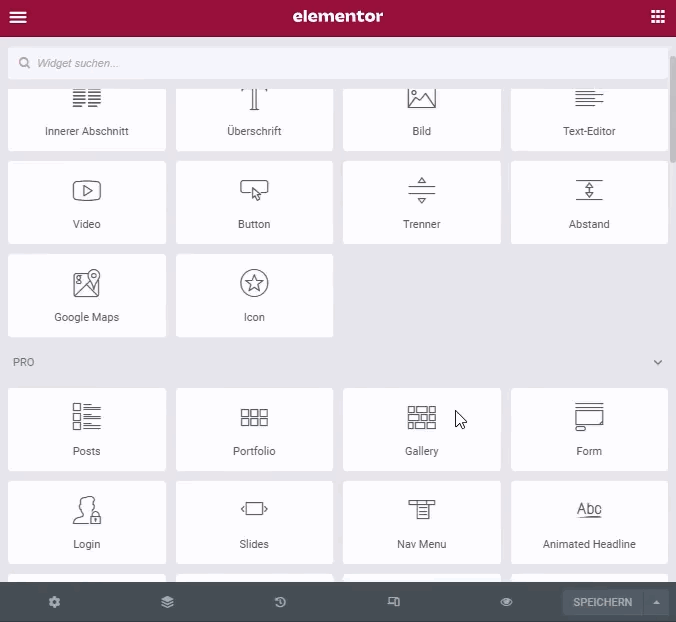
Elementor offers in its free version about 30 so-called Basic Widgets. Starting with the Pro version, there are more than 60 additional widgets that cover almost every possible need. In addition, there are 30 Basic Templates and in the Pro version more than 300 Pro Templates. A pop-up builder, WooCommerce builder as well as form builder are also included. Learn the difference between Elementor Free and Elementor Pro.
With Elementor, the terms Elements, Widgets, and Modules are used interchangeably.
Thus, there is little that cannot be done with Elementor. More specifically, I personally have never reached a point where I could not have implemented the design I wanted with Elementor. There have always been more than enough options to realize your own creative ideas.
Performance check of the WordPress Page-Builder
| Divi | Elementor | |
|---|---|---|
| Time to First Byte (TTFB) | 168 ms | 221 ms |
| Largest Contentful Paint | 330 ms | 696 ms |
| Total Blocking Time | 6 ms | 0 ms |
| Cumulative Layout Shift | 0.01 | 0 |
For the speedtest I measured the Core Web Vitals of both Page-Builders. With these numbers you can make your own picture. As you can see, these numbers don’t show a clear picture.
In terms of performance, the comparison between Divi vs Elementor is particularly interesting. Here, of course, the question is how accurately I can perform the test to get the most meaningful results. If I look at the pure code, I immediately notice that Divi repeatedly integrates different shortcodes, which is not the case with Elementor. Per se, neither is a big problem, though, with shortcodes remaining in the code later and thus becoming ballast within WordPress.
The performance of both Page-Builders also shifts slightly as new updates are constantly released. Divi, for example, now uses a dynamic CSS system. Over the years, many other optimizations have also been added to make the Page-Builder theme more efficient and, most importantly, more performant. These updates have also borne fruit and produce good results. Elementor, on the other hand, was designed from the beginning to be a bit more minimal and therefore much more performant. This is certainly also due to the fact that Elementor is a plugin and does not come with a standalone theme.
Here are the screenshots of my tests at GTmetrix:

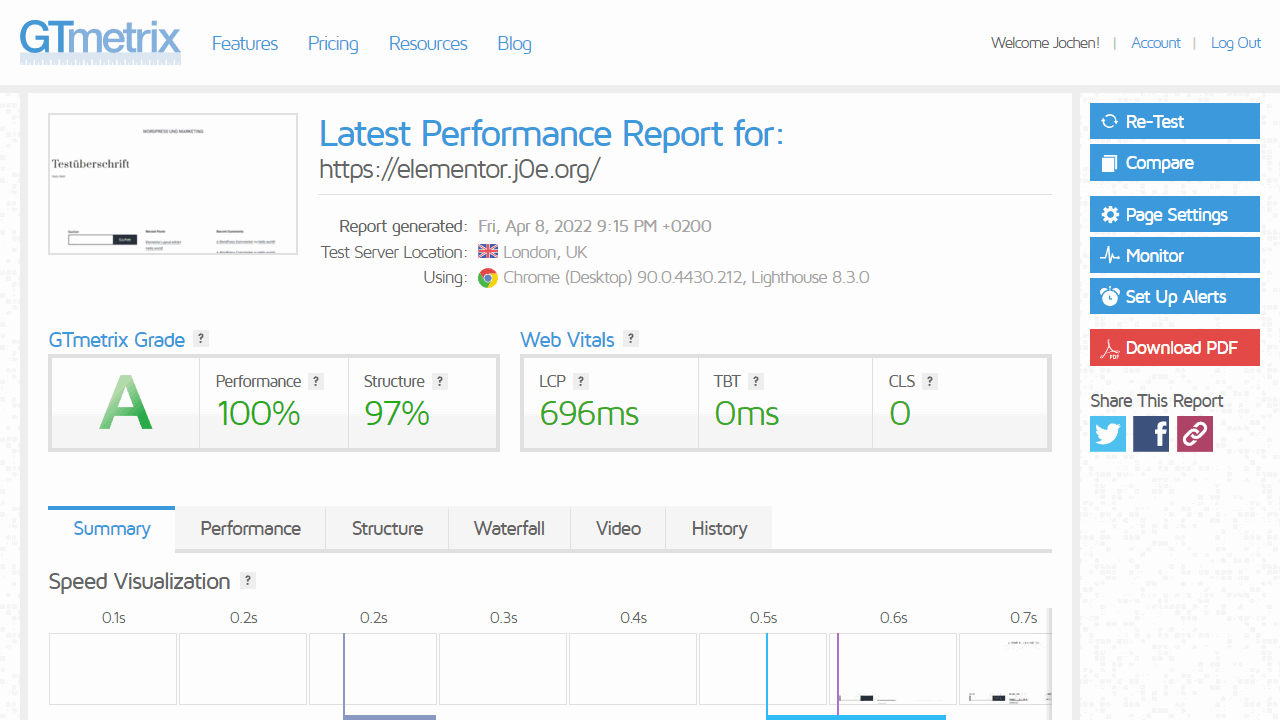
In terms of performance, there is no clear winner for me. From the pure design and logic of the systems, I would personally say that Elementor is a touch faster than Divi in many cases. However, not in a way that would actually be relevant. Also, as mentioned above, comparison is rather difficult as each module is built and integrated differently. Divi as a theme and Elementor as a plugin are thus only comparable to a certain extent. As a WordPress professional, I still say that I basically like Elementor better in terms of performance and flexibility.
When it comes to overall performance, neither Page-Builder wins for me. They both weaken in some areas, but are exceedingly strong in others. In addition, it always depends on exactly which functions are in use. If performance is most important to you, I would still recommend Elementor. It’s a bit faster in many situations and more compact than the Divi theme due to its structure. In addition, I have direct influence on the theme itself, while Divi is already a theme and I can not change as much.
Page-Builder in combination with WooCommerce
Both the Divi theme and the Elementor plugin work with WooCommerce without any problems. This might be of great importance for one or the other, where many blogs act as a connection to their own online store. Both Page-Builders are no problem for you if you also use WooWommerce or plan to use it in the future.
Divi in particular even has the so-called WooCommerce Builder for this purpose. More specifically, Divi has several Divi WooCommerce modules that work perfectly with WooCommerce to create product pages and more. In my eyes, though, that was worth an article in itself.
Elementor also has a WooCommerce builder on board. Elementor promises here that each page of your store can be fully personalized via the Page-Builder, making it just like the actual content pages of a blog. Again, I refer to the corresponding Landing-Page of the developer, as the topic within this article would truly go beyond the scope.
The only important thing for now is that both Divi and Elementor actively support WooCommerce. This is done with modules adapted for it and thus, in a way, a WooCommerce builder of their own.
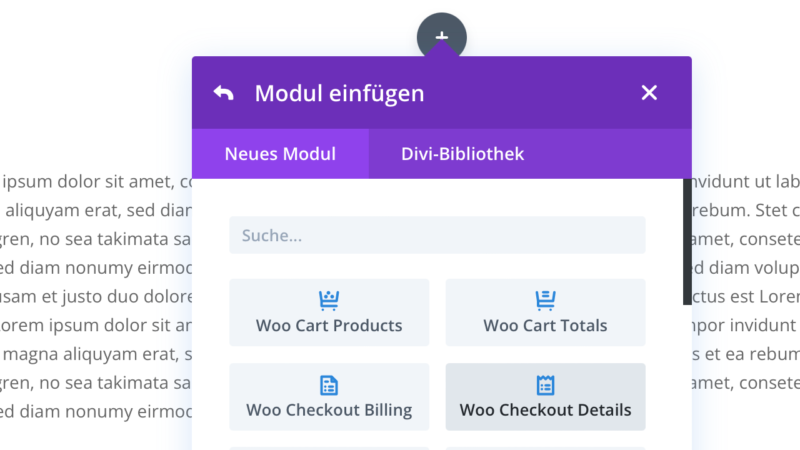
Prices of Divi vs Elementor comparison
| Divi | Elementor | |
|---|---|---|
| Free version | no | yes |
| 1 website | $ 89 / year | $ 59 / year |
| 3 websites | $ 89 / year | $ 99 / year |
| 25 websites | $ 89 / year | $ 199 / year |
| Unlimited websites | $ 89 / year | $ 399 / year |
| Lifetime Deal | $ 249 |
Divi and Elementor are also very different when it comes to pricing!
Update: Elementor Agency will only cost $399.00 annually for 1000 websites. Elementor Essential will cost $59.00 instead of the previous $49.00 annually for one website starting January 1, 2023. The Studio plan has been discontinued.
You can get the Divi theme for your WordPress website starting at $89 per year. However, the whole concept is more about the lifetime license, where you pay $249 once and then never have any costs again. So unless you plan on replacing Divi in a year or two, the regular license basically makes no sense at all. You should therefore go for the more expensive, but in the long run cheaper Lifetime license right from the start.
Elementor, on the other hand, is completely free in the basic version. The first Elementor Pro plan costs only $59 per year. The prices are staggered according to the number of websites you want to build with Elementor. For example, for 1,000 websites with Elementor, you pay $399. For three, on the other hand, you only pay $99 per year. There is even a cloud hosting service for Elementor, where WordPress is pre-installed accordingly. By the way, you can find a lot more information and comparisons about WordPress hosting on my blog.
What quickly becomes clear, however, is that Divi has been priced a little more attractively. If you only want to build a single website with WordPress and Elementor, then you are well advised with the approximately 50 dollars per month.
However, if you want to run multiple blogs from the start, have your own customers, or are simply looking for an all-around worry-free package that will never incur new costs for you, the lifetime license of Divi is more than tempting. Elementor almost seems a bit conservative and old-fashioned in its pricing.
All this is not to say that Page-Builder is worse. They are just two completely different pricing models. Here, you’ll have to figure out for yourself which model suits you and your blogs best. Divi vs. Elementor also applies to the price. However, only you can make the decision about it yourself.
Elementor Cloud Website
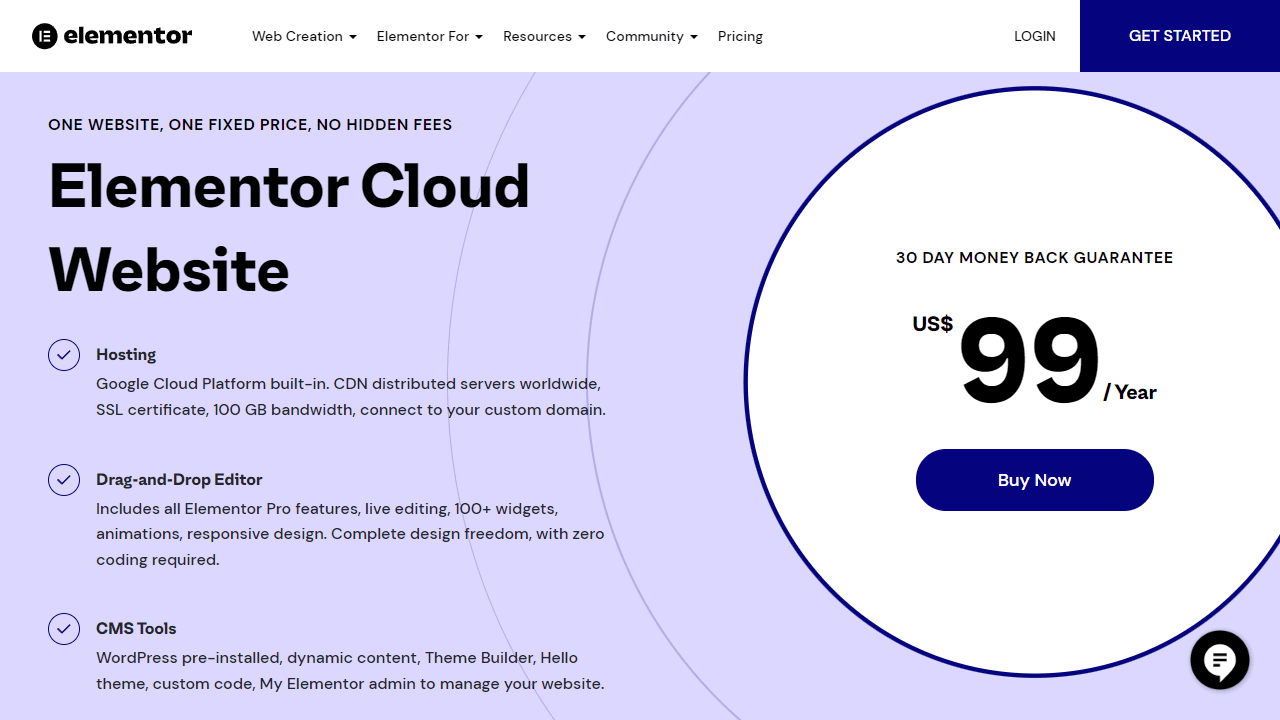
Elementor takes a new approach with the Cloud Website. You pay $99.00 once a year and don’t have to worry about anything else.
Hosting Elementor Pro and a ready WordPress installation is included. Included are 100 GB bandwidth incl. CDN. A good offer.
Divi pros and cons

Divi seems like a brilliant deal at first glance. Small price, large scope, the theme is virtually already included and so you get as a customer the all in one package, where you have to worry about supposedly nothing more. In addition, there is a lifetime license, so that the annual costs are completely eliminated. Pay once, get everything. Theme, Page-Builder, updates and much more. Divi truly seems like a good deal.
But as great as all this may sound at first, Divi does have its own downsides. For example, once you start using Divi, you’ll have a hard time switching back later. All your articles and layouts are adapted to Divi and its shortcodes and functions. It is therefore no longer possible, especially for beginners, to spontaneously change the theme or the Page-Builder. This is simply not possible with Divi. At least not if you don’t know a little bit about the whole WordPress stuff.
On the other hand, the whole concept is not designed for you to change. The lifetime license already makes this clear. In the end, Divi is very powerful, but not too flexible compared to Elementor. If you choose Divi as your WordPress Page-Builder and theme, you are in a way committing yourself for life.
Elementor advantages and disadvantages

What seems so brilliant about Elementor, in my opinion, is that as a plugin it works completely independently of your particular WordPress theme. Divi is a pre-built theme that I can configure and customize freely via Page-Builder. Elementor, however, is even more free because it works with almost any (!) theme and doesn’t appear tied to any one. In addition, there are now many very nice and clever themes created specifically for Elementor. Whereas this is of course true for Divi in a similar way, where here it’s Div Child Themes.
This way I get presented with unprecedented design possibilities. So I use my own theme, and through Elementor I bring different dynamics to the articles themselves, which allow me to make my posts even more exciting and dynamic. But the genius is and remains that all this works independently of the WordPress theme. So if I change themes later, my article layouts are still available through Elementor. This is not the case with Divi, also because it integrates many shortcodes that are meaningless without the WordPress theme and can no longer be converted correctly.
The biggest advantage of Elementor, in my opinion, is that it can work largely autonomously. The plugin is a Page-Builder that allows me to create exciting designs based on my theme. However, it is not a WordPress theme, nor does Elementor integrate shortcodes, so I can still switch or rearrange the plugin whenever I feel like it. This is exactly the aspect that can end up being worth a lot. Furthermore, Elementor already offers a WordPress theme by default, which may be customized accordingly. So Elementor is also to be understood as a complete solution, but works slightly different in detail.
Elementor thus seems a little more thought out, more detached and less binding. It seems to me that more is possible with Elementor, especially because it is a plugin and not a theme.
My conclusion about Divi and Elementor
It’s difficult to draw an objective conclusion when two tools that seem so different at first glance, end up not being all that different after all. One is a WordPress theme, the other a WordPress plugin. It seems like the contrasts couldn’t be bigger. But in the end, both Page-Builders offer me more or less identical features. No matter if Elementor or Divi, you will hardly have to cut back in a direct comparison and will be able to realize almost the same designs. So it’s more a question of taste, not of possibilities or features.
For me, Elementor Pro is still the narrow winner. That’s because the Page-Builder just seems a little more flexible for me as a professional. Especially when it comes to themes, I don’t like to get tied down. Elementor works with any WordPress theme and integrates its own Page-Builder there. No matter if it’s a company website, a personal blog, a portal for news or a big community – with Elementor I can handle any kind of WordPress blog and website. Also because I can use a separate theme for each page and use the Page-Builder only as an extremely practical attachment, so like a form of tool. This works surprisingly well on a day-to-day basis.
Divi, on the other hand, is above all simple and also very directly usable on the page itself. This makes it particularly easy to use and editing content is really a lot of fun. As a Page-Builder, Divi therefore also works excellently. However, only in conjunction with the Divi theme, which integrates the Page-Builder in the first place. There is no provision for switching, so customizations always have to be done via Divi itself or child themes. I like this less than Elementor, even though it can have certain advantages as well.
My personal favorite is Elementor in the end. Because with the WordPress plugin, at least if you ask me, a bit more is possible than with Divi and I can additionally combine the design variety of the Page-Builder with the freedom of a theme. However, options and possibilities have both and in the end it is rather the general operation and the structure, which are decisive here. There Divi is then a bit too fiddly for me, at least in direct comparison with Elementor.
However, in the end I would like to mention again that both Divi and Elementor really work excellently. So it is and remains rather a question of one’s own taste. In their variety and operation, both are pretty good, just in a different way. So when it comes to the question “Divi .vs Elementor: Which is better?”, no one takes the clear lead that would justify an answer. It’s best to try them both and then decide according to your personal preferences.
